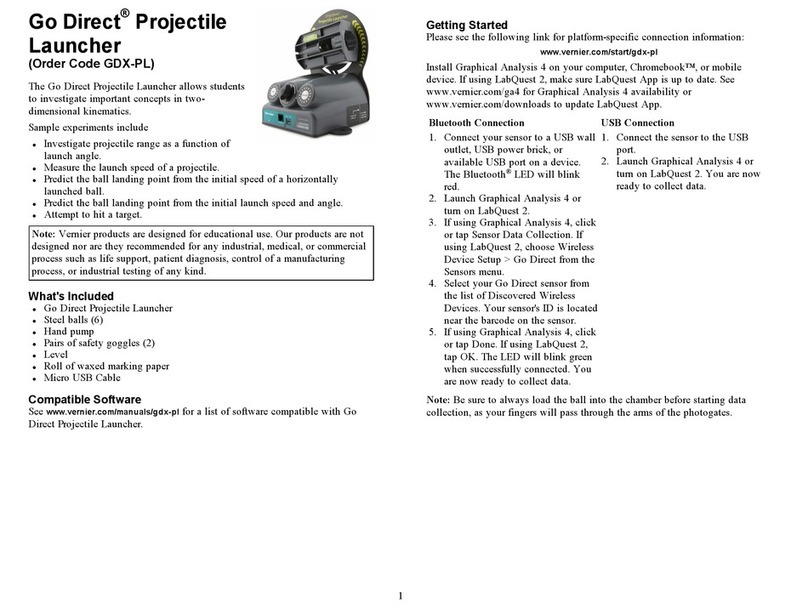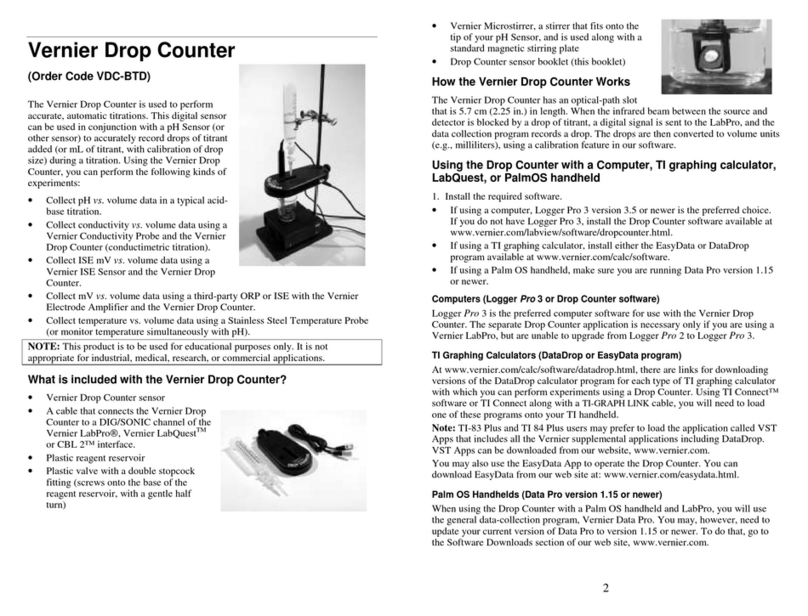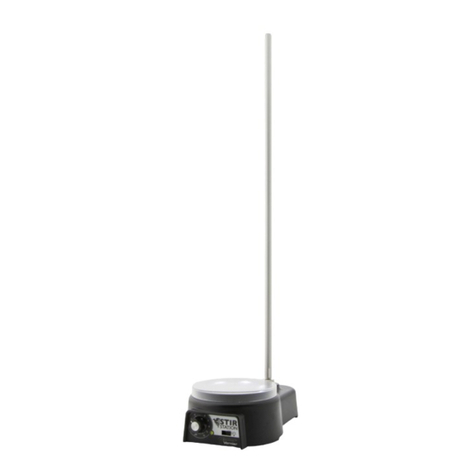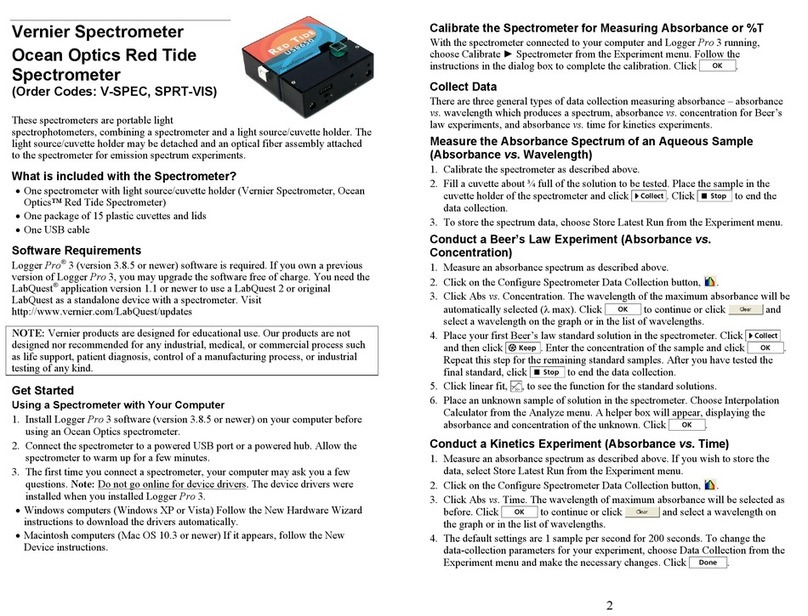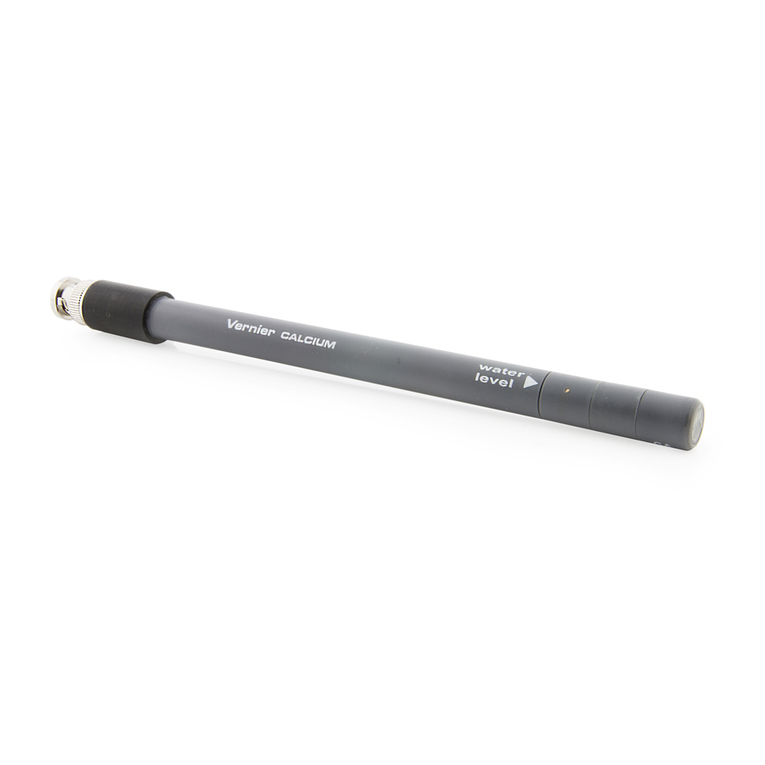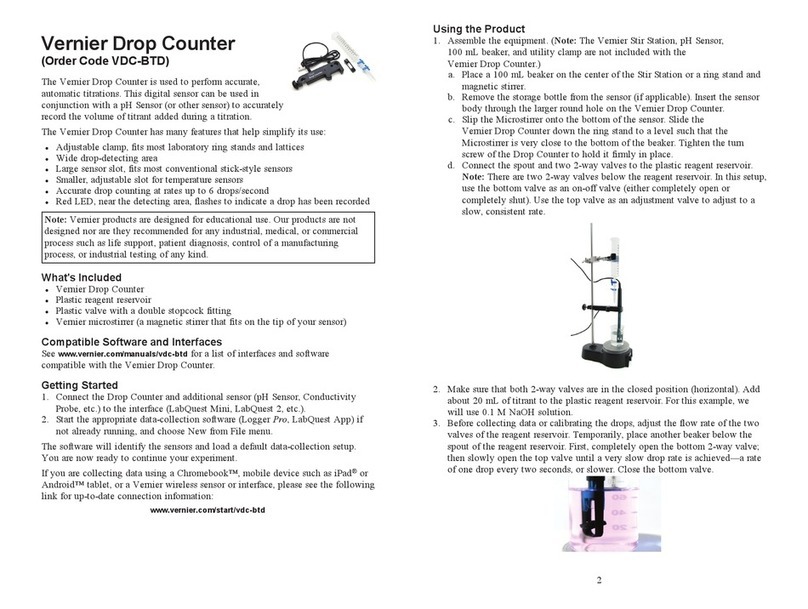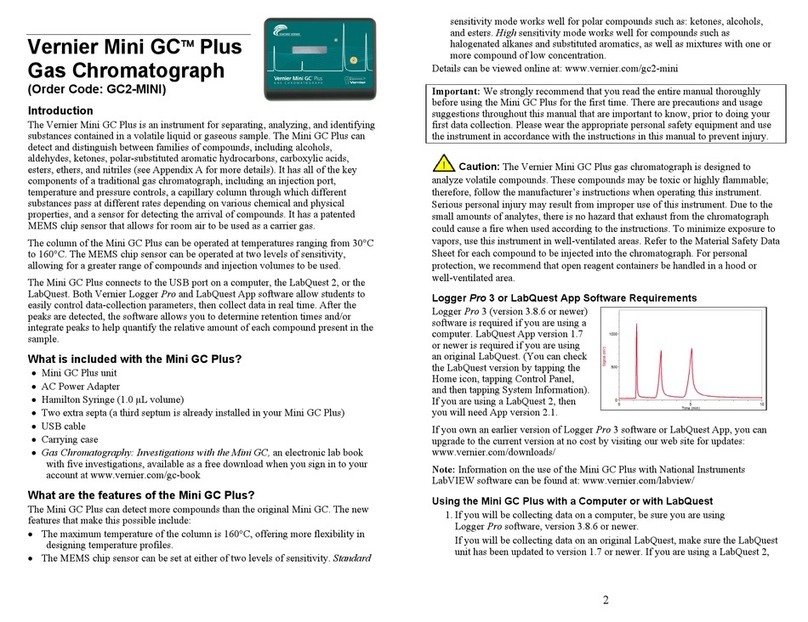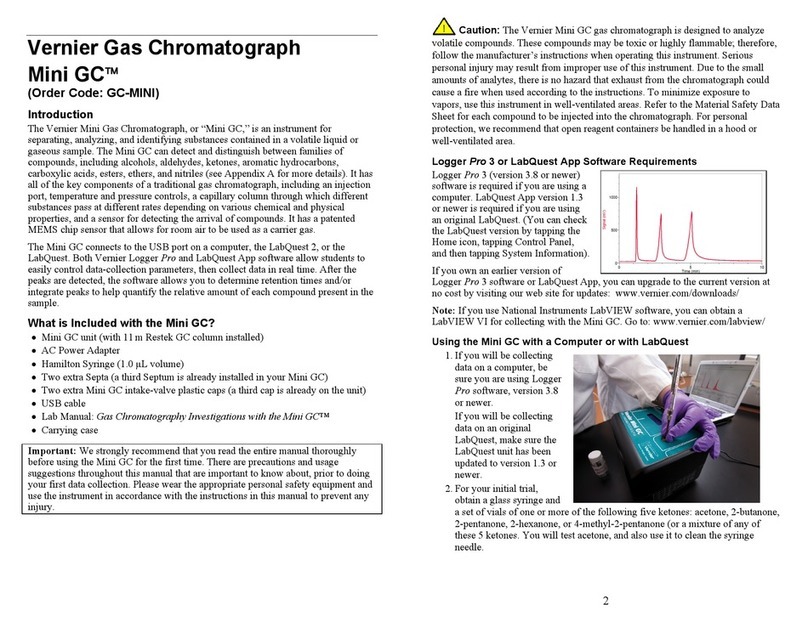
2
Sampling Freshwater Samples for Chloride Concentration
For best results, calibrate the Chloride ISE using the 10 mg/L and 1000 mg/L
standards.
How Can I Have My ISE Read mV Output Instead of mg/L?
If you would like to have your ISE read mV output instead of mg/L, the
amplification equation is:
V = 0.00727*mV + 1.223
Therefore, the reverse amplification equation, solving for mV, would be:
mV = 137.55*V – 0.1682
Measuring Chloride Concentration of Saltwater or Brackish Water
When measuring chloride concentration in seawater or brackish water, calibrate
the Chloride ISE using the 1000 mg/L standard included with your Chloride ISE
for one calibration point (or 1.806 parts per thousand, or ppt). For the second
calibration point, prepare a standard that is 20,000 mg/L Cl–by adding 32.96 g
of solid NaCl to enough distilled water to prepare 1 L of solution:
If you are calibrating in ppt, call this solution 36.13 ppt.
Determining Salinity of Saltwater or Brackish Water
Salinity is the total of all salts dissolved in water, expressed either as mg/L
(equal to parts per million, ppm) or in parts per thousand (ppt). Seawater
contains a fairly constant quantity of chloride ions. From your measurement of
chloride ion concentration (in the previous section), salinity can be calculated
using the following formula:
Salinity (mg/L or ppm) = 1.8066 × [Cl–concentration, mg/L]
Using this formula, the salinity of saltwater is calculated to be:
Salinity (mg/L or ppm) = 1.8066 × (19400 mg/L) = 35,000 mg/L
The level of salinity of seawater in parts per thousand, or ppt, would be:
Salinity (ppt) = 35,000 / 1,000 = 35 ppt
Collecting Data
1. Make sure the sensor is properly calibrated. If the meter has a reading of
1.0mg/L and the sensor is not in a 1.0 mg/L solution, you need to calibrate.
After calibration, rinse off the tip of the ISE and blot it dry with a paper
towel.
2. Insert the tip of the ISE into the aqueous sample to be tested. Important:
Make sure the ISE is not resting on the bottom of the container, the white
reference contacts near the tip of the electrode are immersed, and no air
bubbles are trapped below the ISE. Note: Do not completely submerge the
sensor. The handle is not waterproof.
3. Hold the ISE still until the reading stabilizes and record the displayed
reading. Note: With some aqueous samples, especially those at high
7. Enter the concentration value for the Low Standard (e.g., 1for 1 mg/L).
8. After the voltage reading stabilizes, click .
9. To save the calibration to the sensor, follow the steps below:
a. Click the Calibration Storage tab at the top of the dialog box.
b. Click . Click .
c. Click to continue. Click to complete the process.
Calibrating the Chloride ISE with LabQuest App
1. Connect the Chloride ISE to LabQuest. Choose Calibrate from the Sensors
menu and select Calibrate Now.
2. High Standard Calibration Point: The Chloride ISE should still be soaking
in the High Standard. The ISE should not rest on the bottom of the
container, and the small white reference contacts near the tip of the electrode
should be immersed. Make sure no air bubbles are trapped below the ISE.
3. Enter the concentration of the High Standard (e.g., 100 for 100 mg/L) for
Reading 1.
4. After the voltage reading stabilizes (~2 minutes), tap Keep.
5. Low Standard Calibration Point: Remove the ISE from the High Standard,
rinse well with distilled water, and gently blot the ISE dry with a paper
towel. Place the ISE into the Low Standard. Make sure the ISE is not resting
on the bottom of the container, the white reference contacts near the tip of
the electrode are immersed, and no air bubbles are trapped below the ISE.
6. Enter the concentration of the Low Standard (e.g., 1for 1 mg/L) for Reading
2.
7. After the voltage reading stabilizes, tap Keep.
8. To save the calibration to the sensor, follow the steps below:
a. Tap Storage.
b. Tap Save Calibration to Sensor. Tap OK.
c. Tap OK to complete the process.
Using the Product
Chloride ions are found in freshwater samples as a result of water flowing over
salt-containing minerals. These salts might include either sodium chloride
(NaCl) or potassium chloride (KCl). The EPA maximum contamination level for
chloride concentration in drinking water is 250mg/L. The chloride ion
concentration in seawater is approximately 19,400mg/L—well below the upper
limit of the Chloride ISE of 35,500mg/L.
When the response of the Chloride ISE begins to slow, the membrane may need
polishing. Cut a small piece (about 1 inch square) from a polishing strip. Wet
the end of the electrode and the dull side of the polishing strip thoroughly with
distilled water. Using only moderate pressure, polish the end of the electrode by
gently rubbing it in a circular motion. This will remove the inactive layer of the
membrane which impedes measurement. Rinse thoroughly with distilled water
and recalibrate in the usual manner.
